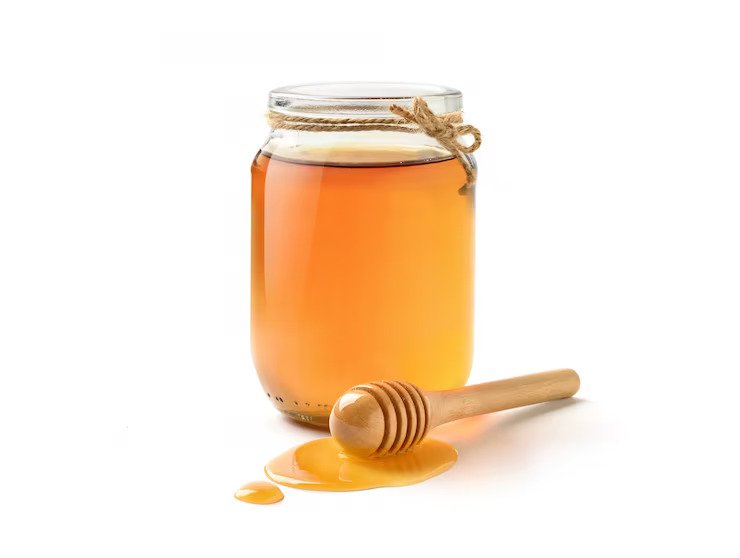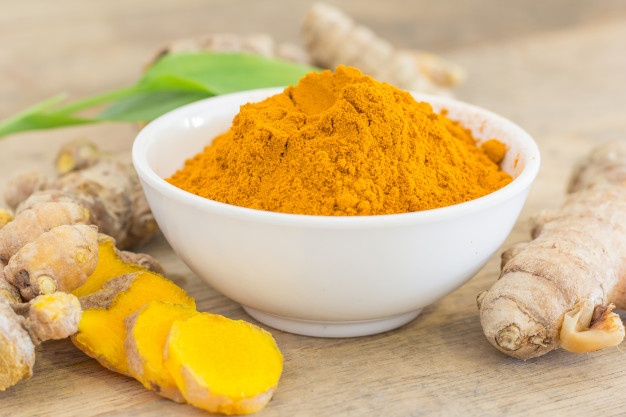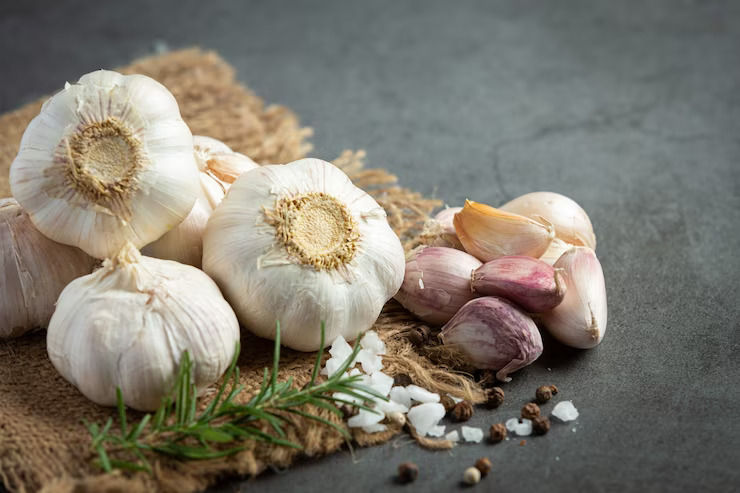It is well said that the kitchen is where you treat all your illnesses. Hence, it has been proven that the natural application of substances shows remarkable results in the early stage of the disease. Today, I came to you to explain wounds, and you can heal first or second degrees. A good illustration of this can be that a study shows that a natural substance's medicinal properties improve the wound healing rate faster. If you develop a third degree, it is better to consult a doctor.  Honey has been used over the past few years because of its antioxidant, antibacterial, and anti-inflammatory properties. This has proven that healing gets faster when you apply honey to the wound. Honey is better to be applied on minor wounds; however, for major wounds, do consult with a doctor. How to use honey on wounds
Honey has been used over the past few years because of its antioxidant, antibacterial, and anti-inflammatory properties. This has proven that healing gets faster when you apply honey to the wound. Honey is better to be applied on minor wounds; however, for major wounds, do consult with a doctor. How to use honey on wounds  Turmeric is a common spice used in India. This spice has tremendous antibacterial properties, which help the wound prevent infection. A study revealed that turmeric contains curcumin which promotes the growth involved in the healing process. Curcumin helps to differentiate fibroblasts into myofibroblasts that help in the healing process. How to use turmeric on wounds
Turmeric is a common spice used in India. This spice has tremendous antibacterial properties, which help the wound prevent infection. A study revealed that turmeric contains curcumin which promotes the growth involved in the healing process. Curcumin helps to differentiate fibroblasts into myofibroblasts that help in the healing process. How to use turmeric on wounds There is no doubt that garlic has medical properties and prevents many disease conditions. Garlic has a natural substance called allicin which has antimicrobial and anti-inflammatory properties. Garlic shows significant results in wound healing rate and promotes fibroblasts for healing the skin. How to use garlic on wounds
There is no doubt that garlic has medical properties and prevents many disease conditions. Garlic has a natural substance called allicin which has antimicrobial and anti-inflammatory properties. Garlic shows significant results in wound healing rate and promotes fibroblasts for healing the skin. How to use garlic on wounds  Coconut has been used in many recipes because the substance called monolaurin, a fatty acid, has antimicrobial properties that enable it to improve wound healing. Coconut oil acts as a barrier to cut the infection from the air. Virgin coconut oil demonstrates the wound heals faster. How to use coconut oil on wounds
Coconut has been used in many recipes because the substance called monolaurin, a fatty acid, has antimicrobial properties that enable it to improve wound healing. Coconut oil acts as a barrier to cut the infection from the air. Virgin coconut oil demonstrates the wound heals faster. How to use coconut oil on wounds  Limestone powder has been used for other purposes, such as abscesses, cut wounds, and insect bites. Additionally, it has been seen that limestone powder is highly alkaline that prevents bacteria and microorganisms from sticking and growing on the wound. How to use limestone powder on wounds
Limestone powder has been used for other purposes, such as abscesses, cut wounds, and insect bites. Additionally, it has been seen that limestone powder is highly alkaline that prevents bacteria and microorganisms from sticking and growing on the wound. How to use limestone powder on wounds You must be thinking aloe vera is good for the skin and that it can help wounds. It is interesting to know that aloe vera has analgesic properties, which lower the pain that occurs due to wounds. This gel contains phytochemicals that reduce pain and inflammation. If you have aloe vera in your house, let me tell you how you can use it. How to apply aloe vera on wounds
You must be thinking aloe vera is good for the skin and that it can help wounds. It is interesting to know that aloe vera has analgesic properties, which lower the pain that occurs due to wounds. This gel contains phytochemicals that reduce pain and inflammation. If you have aloe vera in your house, let me tell you how you can use it. How to apply aloe vera on wounds Onion has an antimicrobial property known as allicin which protects wounds from infection. Onions showed effective results in healing wounds as it has the property to build collagen protein to heal the skin. How to use onion on wounds
Onion has an antimicrobial property known as allicin which protects wounds from infection. Onions showed effective results in healing wounds as it has the property to build collagen protein to heal the skin. How to use onion on wounds
How to heal wounds faster naturally?
Occasionally a cut or wound happens, and you should always disinfect them with mild water. Nevertheless, soap and water aren't sufficient to heal when an infection occurs. Make Sure Your Wound Can Heal At Home. If not, then you must visit a doctor immediately.Healing a wound at home may include the Followings:
- Apply Antibacterial Ointment or cream on Wounds
- You can also use turmeric, Aloe Vera gel, coconut oil, and honey to heal it quickly.
7 Ultimate Remedies for healing wounds naturally
Following are a few home remedies or tips to heal a wound naturally:1. Honey
 Honey has been used over the past few years because of its antioxidant, antibacterial, and anti-inflammatory properties. This has proven that healing gets faster when you apply honey to the wound. Honey is better to be applied on minor wounds; however, for major wounds, do consult with a doctor. How to use honey on wounds
Honey has been used over the past few years because of its antioxidant, antibacterial, and anti-inflammatory properties. This has proven that healing gets faster when you apply honey to the wound. Honey is better to be applied on minor wounds; however, for major wounds, do consult with a doctor. How to use honey on wounds - You should always maintain your hand hygiene before handling any wounds.
- First and foremost, apply honey to the dressing, then put the same dressing gauze on the skin.
- Stick with adhesive tapes.
- Replace the dressing according to the soakage. This dressing is likely to be less frequent.
- Wash your hands properly.
2. Turmeric
 Turmeric is a common spice used in India. This spice has tremendous antibacterial properties, which help the wound prevent infection. A study revealed that turmeric contains curcumin which promotes the growth involved in the healing process. Curcumin helps to differentiate fibroblasts into myofibroblasts that help in the healing process. How to use turmeric on wounds
Turmeric is a common spice used in India. This spice has tremendous antibacterial properties, which help the wound prevent infection. A study revealed that turmeric contains curcumin which promotes the growth involved in the healing process. Curcumin helps to differentiate fibroblasts into myofibroblasts that help in the healing process. How to use turmeric on wounds- Your hands must be clean before applying to dressing.
- Turmeric is considered to be less toxic properties,
- Make a paste by mixing turmeric in warm water
- Apply a thin layer of paste on wounds.
- Covered it with a gauze piece.
- Change the dressing as per the oozing of blood or fluids.
- Lastly, clean your hands.
3. Garlic
 There is no doubt that garlic has medical properties and prevents many disease conditions. Garlic has a natural substance called allicin which has antimicrobial and anti-inflammatory properties. Garlic shows significant results in wound healing rate and promotes fibroblasts for healing the skin. How to use garlic on wounds
There is no doubt that garlic has medical properties and prevents many disease conditions. Garlic has a natural substance called allicin which has antimicrobial and anti-inflammatory properties. Garlic shows significant results in wound healing rate and promotes fibroblasts for healing the skin. How to use garlic on wounds - Wash garlic carefully, and grind almost 15 cloves in a little water to make it paste.
- Get sterile or clean gauze and carefully apply the paste to the gauze.
- Secure gauze with sticking tapes.
- Place the gauze for 1-2 hours, and clear the area again. After that, follow the same steps mentioned above.
- Do not forget to clean your hands before and after the procedure.
4. Coconut oil
 Coconut has been used in many recipes because the substance called monolaurin, a fatty acid, has antimicrobial properties that enable it to improve wound healing. Coconut oil acts as a barrier to cut the infection from the air. Virgin coconut oil demonstrates the wound heals faster. How to use coconut oil on wounds
Coconut has been used in many recipes because the substance called monolaurin, a fatty acid, has antimicrobial properties that enable it to improve wound healing. Coconut oil acts as a barrier to cut the infection from the air. Virgin coconut oil demonstrates the wound heals faster. How to use coconut oil on wounds - Hand hygiene should be your priority before handling any wounds.
- Clean the wound with fresh normal saline to clean the wound.
- Apply oil gently around the wound.
- Cover it with a gauze piece and stick it till it drains.
- Repeat the same step when the dressing is required.
- Clean your hand after the procedure.
5. Limestone Powder
 Limestone powder has been used for other purposes, such as abscesses, cut wounds, and insect bites. Additionally, it has been seen that limestone powder is highly alkaline that prevents bacteria and microorganisms from sticking and growing on the wound. How to use limestone powder on wounds
Limestone powder has been used for other purposes, such as abscesses, cut wounds, and insect bites. Additionally, it has been seen that limestone powder is highly alkaline that prevents bacteria and microorganisms from sticking and growing on the wound. How to use limestone powder on wounds- Use clean hands before touching any wounds.
- Apply a mixture of limestone and honey as they have wound-healing properties. Therefore, apply a thick paste of limestone and honey on clean gauze.
- Apply the same gauze to the wound and stick it with adhesive tape for 10 minutes.
- Repeat the steps if soakage occurs.
- Clean your hands after all the steps.
6. Aloe Vera
 You must be thinking aloe vera is good for the skin and that it can help wounds. It is interesting to know that aloe vera has analgesic properties, which lower the pain that occurs due to wounds. This gel contains phytochemicals that reduce pain and inflammation. If you have aloe vera in your house, let me tell you how you can use it. How to apply aloe vera on wounds
You must be thinking aloe vera is good for the skin and that it can help wounds. It is interesting to know that aloe vera has analgesic properties, which lower the pain that occurs due to wounds. This gel contains phytochemicals that reduce pain and inflammation. If you have aloe vera in your house, let me tell you how you can use it. How to apply aloe vera on wounds- Ensure that your hands are clean
- Cut a small amount of aloe vera from the plant. And squeeze it properly to take out all the extract.
- Apply the gel on the wound gently. This prevents the source of infection.
- You can apply gauze pieces and stick them with the tapes.
- Wash your hands properly and change the dressing as per the need.
7. Onion
 Onion has an antimicrobial property known as allicin which protects wounds from infection. Onions showed effective results in healing wounds as it has the property to build collagen protein to heal the skin. How to use onion on wounds
Onion has an antimicrobial property known as allicin which protects wounds from infection. Onions showed effective results in healing wounds as it has the property to build collagen protein to heal the skin. How to use onion on wounds - Cut the onion and blend it properly as much as you can to make a paste.
- For better outcomes, you can mix a paste of onion with honey.
- Apply it on wounds for 20 minutes and wash it off.
- Clean your hands.
How to handle wounds at home?
Handling wounds is a critical thing to do. The person who provides a dressing can also be a source of infection if anything is mishandled. Before touching any minor or major wounds, there are a few steps to keep in mind.- Your hands should be clean. Please follow 10 steps of hand hygiene to clean your hands.
- Remove all jewelry before handling any wounds
- Apply pressure dressing to stop bleeding.
- Clean the wounds with clean water or saline solution. All the equipment should be clean.
- Examine the wound; if any pus is visible, consult a doctor immediately.
- You can apply antibiotic pigments also, as prescribed by a doctor.
- Close the wounds and stick them properly.
FAQ's
In Conclusion
Minor wounds can heal properly if you follow all the steps above and maintain a good diet. However, it must acknowledge if anything abnormal occurs from the wounds. Medical advice is best to take for any major wounds. The hygiene condition of wounds makes the healing process faster. Therefore, maintaining proper hygiene of hands is a crucial first step in reducing the source of infection. Also Read: Essential Oil Sets and Their BenefitsFrequently Asked Questions
What other vitamins can I use to improve wound healing?
A healthy diet is the main component for improving the healing process, mainly high protein. Vitamins like vitamin A and potassium, and zinc are also good for fueling wound healing.
Should I cover or uncover the wounds?
A handful of studies suggest that when wounds are kept closed, it improves blood vessel regeneration and reduces the effect of inflammation compared to being left open.
How will I know the wound is healing?
You will see a couple of things while the wound area healing starts itching; it may look stretched, tight, red, and shiny.

Reviewed by







